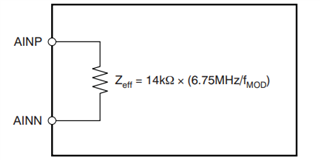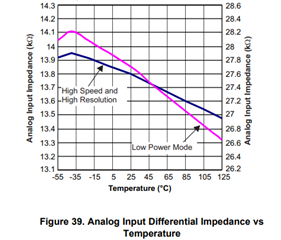Tool/software:
The datasheet for the ADS1278-SP gives typical values for differential input impedance, but gives no indication of variability for a fixed modulator frequency. Does any data exist related to the variability of this parameter? Understandably, an op amp can combat the problem of a "not so high" input impedance where a "not so low" output impedance exists. However, op amps introduce their own errors and this is especially so in DC coupled applications. If the input impedance can be reliably predicted or characterized, it can also be calibrated out.




